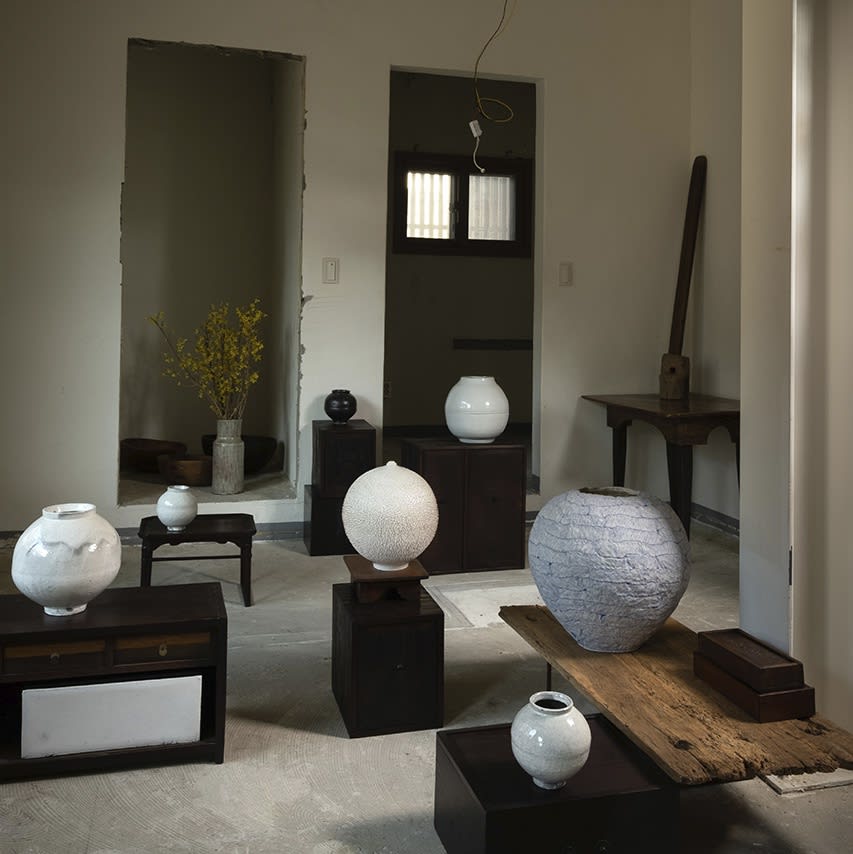Ree Soo-jong Korean, b. 1948
Overview
A pioneering ceramic artist, Ree Soo-jong belongs to the first generation of modern ceramic in South Korea and is the leading figure in the Korean ceramic studio movement. Post Korean war, the country rapidly modernised society, politic, art and culture and had the aim to revive the rich traditional ceramic art in the 60s and 70s when Ree took his first degree in ceramic over his long passion for painting at the major art university Hongik. After mastering the skills and instead reproducing traditional pots, the artist started developing new kinds of ceramic from abstract ceramic painting to sculpture that blurred fine art and ceramics in the 80s. Also known as the modern master of ‘Chulhwa Buncheong’, Ree brought back the forgotten 15-century stoneware white-slip decoration technique and treats the ceramic surface as if it were paper, working with Korean calligraphy painting techniques on white slip mix with iron, using spontaneous, energetic strokes.
Works
-
 Iron Buncheong Jar, 2007View more details
Iron Buncheong Jar, 2007View more details -
 Line of Moon Jar, 2013View more details
Line of Moon Jar, 2013View more details -
 Iron Buncheong Jar, 2015View more details
Iron Buncheong Jar, 2015View more details -
 Iron Buncheong Jar, 2016View more details
Iron Buncheong Jar, 2016View more details -
 Iron Buncheong Jar, 2016View more details
Iron Buncheong Jar, 2016View more details -
 Iron Buncheong Jar, 2018View more details
Iron Buncheong Jar, 2018View more details -
 Iron Buncheong Jar, 2021View more details
Iron Buncheong Jar, 2021View more details -
 Iron Buncheong Jar, 2021View more details
Iron Buncheong Jar, 2021View more details
Exhibitions
Video










